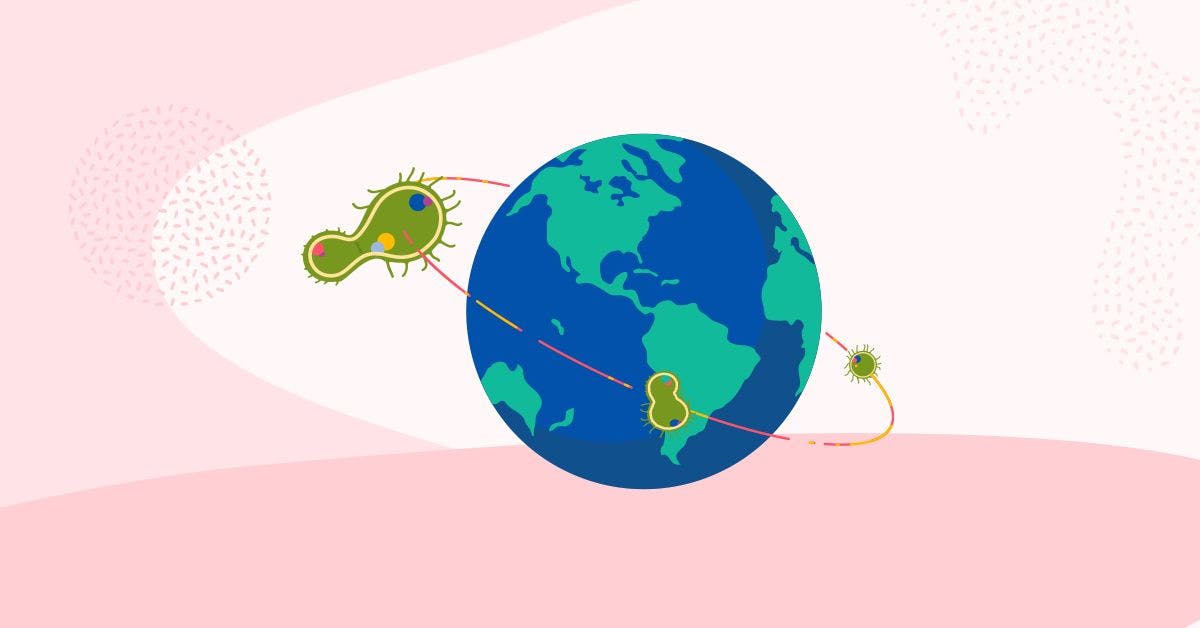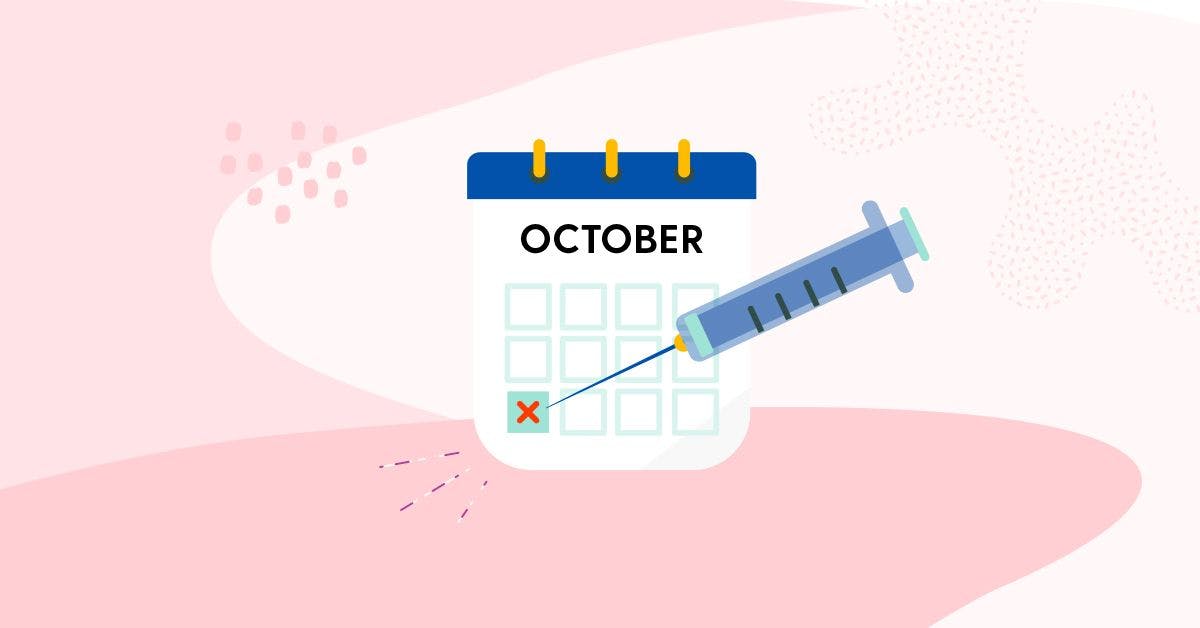A Parent's Guide to Flu Season 2019
Parenting takes grit, and especially as summer weather fades into fall most parents have their hands full. If that sounds like you, and losing days to sickness doesn’t fit into your busy schedule, we thought we’d consolidate all of the data and tips you might need to navigate flu season into a single comprehensive guide.
This guide is for parents who want to put the data in their own hands.

What is the flu?
“The Flu” is caused by the rapidly evolving influenza virus which has been around for thousands of years. The Greek physician Hippocrates, one of the most iconic figures in the history of medicine, wrote about what was likely flu as early as 212 BC. It wasn’t called “the flu” back then, but it was still the disruptive force we know today. Fortunately, medicine and outcomes have improved exponentially since the ancient Greeks, but we still haven’t found a cure.
Why haven’t we created a cure yet?
In some ways scientists have created a cure many times - the problem is that each time they find a solution the flu changes shape.
The outside of an influenza virus is covered in tiny molecules called HA (hemagglutinin) and NA (neuraminidase), which the flu virus wears like a wardrobe. Our immune system uses this ‘clothing’ to identify and attack the virus.
Unfortunately, whenever an influenza virus decides to change outfits, our bodies can’t keep up. The newly dressed influenza particles are able to slip past our immune systems and into our bodies with ease.

How does the flu spread?
The flu can spread in a few ways. It can be contracted from inhaling droplets in the air created by coughing and sneezing, by skin-to-skin contact, saliva, or touching a contaminated surface. This is why it's very important to wash hands frequently and to use face masks when in public areas if you suspect you or your child may have the flu.
Why is there a flu season?
There are several theories about why the flu is seasonal and there is no denying that influenza activity spikes during winter months in each hemisphere.
The authors of a recent academic report on flu seasonality suggested that when flu season is ending in the southern hemisphere in September, that an infected person can fly to North America introducing a new strain of flu and kicking off flu season here. During the winter, people tend to gather in smaller indoor environments, making it easier for the virus to hop from one person to the next. The heated air in schools and homes warms and circulates the virus.
The truth is that these are probably just a few of the factors that contribute to there being a “flu season” during the winter months.
Is the flu really a big deal?
Kids are twice as likely to develop the flu as adults. Nearly 15% of children aged 0-4 catch the flu each year in the US, and 9.3% of all kids under age 18.[ref]
About 48.8 million Americans got sick with the flu in 2018, which equates to about 222 million days of lost school and work. That’s a lot of days.
What are the first signs of flu in 2019?
A case of the flu is marked by a cough, snotty nose, fever, muscle aches, and sometimes a sore throat. Symptoms usually show up 1-4 days after exposure, and those who catch it are usually most contagious 24 hours before symptoms appear.
Contrary to popular belief, influenza is not the same thing as “the stomach flu,” which typically refers to other viral illnesses marked by vomiting and diarrhea. It can be easy to mistake the flu for the common cold, which is more prevalent and also caused by a virus. They have similar symptoms, but generally, the flu is much more intense.
Here are some signs to watch for that can help indicate if your child might have the flu:
| Symptoms | Cold | Flu |
|---|---|---|
| Symptom Onset | Gradual | Abrupt |
| Fever | Rare | Common |
| Aches | Slight | Common |
| Chills | Rare | Common |
| Fatigue | Occasional | Common |
| Sneezing | Common | Rare |
| Stuffy Nose | Common | Rare |
| Sore Throat | Common | Rare |
| Painful Cough | Uncommon | Common |
| Headache | Rare | Common |
What should I expect if my child contracts the flu?
Typically fever and muscle aches will subside after the first 2-4 days, but your child may continue to cough and feel tired for several weeks. Most cases are contagious from the moment a child contracts the virus, until 7 days after symptoms begin.
It is very common that children younger than 5 will require some medical care during the course of their sickness. If your child needs extra care, you aren’t alone. The most common cause for parents to seek professional care is dehydration because a child’s fluid losses are greater than what they are taking in. Pneumonia, sinus problems, and ear infections are also complications of the flu.
You should seek medical care if:
- Child under 2 years of age has flu-like symptoms
- Fever longer than 2 days duration
- Signs of dehydration
- Trouble breathing
- You are concerned as a parent
A pediatric care team can help you navigate the process of having a child with the flu, which will ultimately help your child’s recovery and provide peace of mind.
What can I do to help my child’s flu symptoms?
Unfortunately, there isn’t a great way to expedite recovery from the flu - your child’s immune system simply needs time to do its job - but there are several steps you can take to ease their symptoms and help them feel more comfortable.
One of the most important things you can do for your child is to keep them hydrated and well-rested. The best fluid for oral rehydration is called Pedialyte and is available over the counter. Other options include popsicles, both Pedialyte and regular popsicles, as well as Jell-O, which has a high water content. Apple juice, diluted half and half with water, can help with hydration as well.
The CDC recommends a few prescription medications that can shorten sickness and make symptoms milder if taken within 48-hours of first symptoms. Oseltamivir (Tamiflu) is the most commonly prescribed drug for children with the flu. Your child’s physician should be able to direct if a prescription medication may be in the best interest of your child.

How can I prevent my child from getting the flu?
Influenza vaccines are the most effective way to prevent the flu for you and your child. The vaccine also helps protect against complications, like trouble breathing or hospital visits, for those who do catch the flu.
How effective is the flu vaccine?
The influenza virus evolves much more quickly than other epidemics that modern medicine combats, like measles or polio. This is why a new version of the influenza vaccine is released each flu season, to account for the most recent strains of the virus.
The CDC estimates that during 2018 influenza vaccine decreased risk of contracting the flu by 47% over people who went unvaccinated for that season.
Does the flu vaccine work right away?
After vaccination, your child’s body needs about two weeks to develop the antibodies needed to protect against influenza. We recommend families get vaccinated before the end of October to get the highest level of protection before the flu season really begins. [ref]

What is the difference between flu shots for each age group?
The main difference between flu shots for each age group is the dose. For children age 6-35 months, the contents of the shot are exactly the same but the dose is 0.25mL vs 0.5mL for older children and adults. Children between 6 months and 8 years old who have either never gotten the flu shot before OR who have gotten only one shot in any previous season will need two rounds of the flu shot, at least 4 weeks apart and within the same flu season. This additional dose allows their bodies to generate a stronger immune response to the virus, improving the effectiveness of the vaccine.
Getting sick is a part of growing up.
Everybody gets sick sometimes. It's part of growing up, and the timing is never great. Hopefully, you have a great team in place to support when sickness and boo-boos happen in your family. Our goal is to provide you with tools, data, peace of mind, and care when you need them so that you can conquer flu season and all of life's little adventures.




